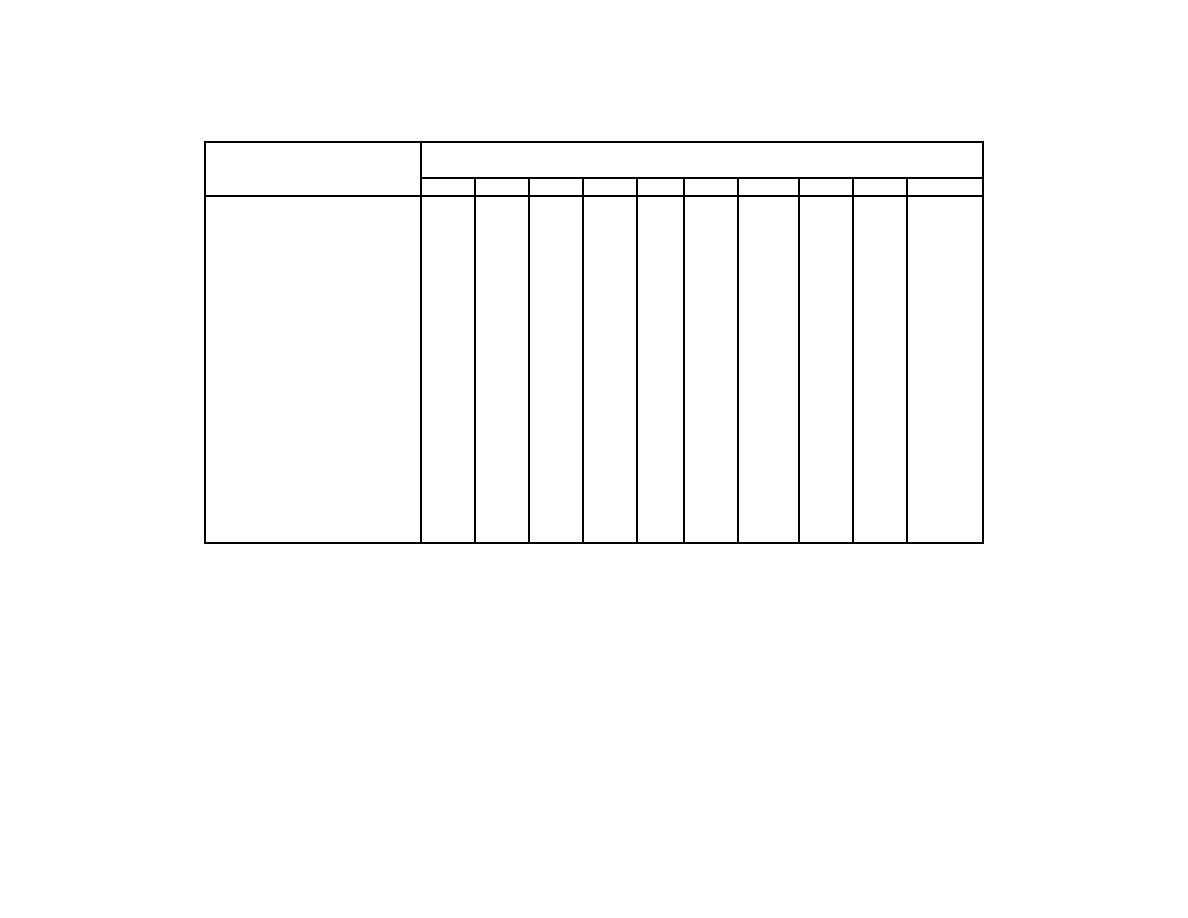
TM 5-850-1
Table 2-2.
Diameter of Berth (in Yards) Using Standard Fleet Moorings, Telephone Buoy
Length of various vessels in ft
Depth of water in ft at MLV
100
200
300
400
500
600
700
800
900
1,000
10..........................................
245
315
380
445
20..........................................
250
315
380
450
515
580
30..........................................
250
315
380
450
515
580
650
40..........................................
250
315
385
450
515
585
650
715
785
850
50..........................................
250
320
385
450
520
585
650
720
785
850
60..........................................
255
320
385
455
520
585
655
720
785
855
70..........................................
255
325
390
455
525
590
655
725
790
855
80..........................................
260
325
395
460
525
595
660
725
795
860
90..........................................
265
330
395
465
530
595
665
730
795
865
100........................................
265
335
400
465
535
600
665
735
800
865
110........................................
270
335
405
470
535
605
670
735
805
870
120........................................
275
340
410
475
540
610
675
740
810
875
130........................................
280
345
415
480
545
615
680
745
815
880
140........................................
285
350
420
485
550
620
685
750
820
885
150........................................
295
360
425
495
560
625
695
760
825
895
160........................................
300
365
435
500
565
635
700
765
835
900
170........................................
310
375
440
510
575
640
710
775
840
910
180........................................
320
385
455
520
585
655
720
785
855
920
190........................................
330
400
465
530
600
665
730
800
865
930
200........................................
350
420
485
550
620
685
750
820
885
950
This table is based on the following assumptions:
(a)
Chains are of the length called for by the drawings and are pulled out to obtain chain tension of about 12,000 lb
with anchor in initial position.
(b)
Anchor drags 90 ft from initial position.
(c)
180 ft of ship's chain used between vessel and buoy.
(d)
Basic formula D = 2/3 (R + L + C2). Where:
D = diameter of berth in yd.
R = radius of swing of buoy in ft.
L = length overall of vessel in ft.
C2 = 270 ft (includes 180 ft from buoy to ship and 90 ft allowance for anchor drag). No correction for
drop in waterline due to tide is required.
Department of the Navy
2-4



 Previous Page
Previous Page
